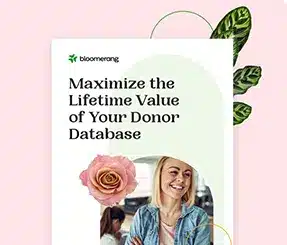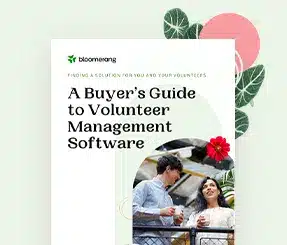A New Nonprofit Donor Paradigm: First-Time And Habitual Gifts


Full Platform Overview Chat With Us



Full Platform Overview Chat With Us




For years we’ve talked about donors from the perspective of a “pyramid” or “ladder.” Those at the top are “major.” Those in the middle are “mid-level.” Those at the bottom are, generally, “new.”
But it doesn’t really work that way.
Especially not in our digitally revolutionized marketplace where outbound (push) marketing no longer rules. Today’s most effective marketers engage in inbound (pull) marketing.
Which is why I advocate retiring the old donor pyramid in favor of a dynamic energy vortex.
In a dynamic energy vortex people swoop in and out, depending on what pulls them toward your center. This may include what’s going on in the world, what’s going on in their lives, and/or how you communicate with them. Or don’t.
Of course, the more you exert a powerful magnetic pull the more likely they are to be attracted toward the center of the vortex. Pushing folks up a ladder is really hard work, and sometimes their weight will simply be too much. Think of Sisyphus trying to roll that ball up a hill. It’s the reason so many donor programs have retention rates representing three steps forward, two steps back. Or worse.
And it’s why the way we’re used to categorizing gifts as small, medium, and large (or “new,” “mid-level,” and “major”) may not be the most fruitful strategy.
Let’s stop giving gifts, and donors, these outdated labels.
I prefer a different donor paradigm.
How about categorizing gifts as:
Today we’ll look at the first two; we’ll cover the latter two in Part 2.
First-time donors are making their very first gift to your organization. This can be any dollar amount. Usually, but not always, it will be relatively small; the donor doesn’t know you very well yet and is testing the waters. Keep in mind, however, that what’s small for Bill Gates may be major for “Bill Generous.” When Bill Gates makes a $1,000 gift it’s a token. When Bill Generous — who lives paycheck to paycheck, just got laid off and has no idea where his next meal is coming from — makes a $20 gift, that’s a way-beyond-token vote of confidence in your mission.
In the vortex model, the amount of energy being exuded by Bill Gates with his $1,000 gift is minimal. I imagine him hovering around the edges. You’re going to need to do a lot of something to pull him closer. With him, the force is weak.
The amount of energy being exuded by Bill Generous, with his $20 gift, could be immense. I imagine him as being at the very center of your vortex. You may think of him just as a “small donor,” yet he loves you so much he just made a stretch gift. This is the type of person who might leave their home to you in their Will. With him, the force is strong.
In both cases, you’re not ready to make a decision about how to best cultivate them further. Not until you’ve given them opportunity to engage further and show you who they are. You’ll need to put strategies in place to do this; then monitor their engagement. This is why you don’t want to automatically categorize Bill Gates as a major donor, or treat Bill Generous as if his gift is chopped liver.
GENERAL RULE: Do not ignore any first-time donors, no matter the size of their current gift.
ACTION STRATEGIES to pull first-time donors towards the vortex center:
Habitual donors are those who give at the same time and in the same amount every time. They don’t think about it much, so there’s not much energy expended. These donors, no matter the size of their gift, are hovering near the edges of your vortex. Whatever you’re doing to attempt to pull them closer, it’s not working. Most likely, with these donors, you’re not doing much.
Too often we label habitual donors as “loyal,” giving us an excuse not to do too much. We assume they’ll just keep giving, no matter what. Maybe, maybe not. But… is that enough? Sure, they’re “loyal.” But this isn’t the same as being engaged, inspired, and passionate with their philanthropy.
GENERAL RULE: Do not ignore habitual donors or assume they’ll never give more. In fact, don’t categorize donors by the size of their gift. If you hear yourself or someone else saying, as a rationale for not investing more effort, “Oh, he’s just a $100 donor,” stop it! Focus, instead, on their level of engagement.
ACTION STRATEGIES to pull habitual donors towards the vortex center:
1. First assess what you’ve been doing by taking a look at different segments of your donor list (tailor the amounts so they work for you) to endeavor to ascertain what’s going on in terms of energy expenditure on your part. Ask yourself:
2. Deliver an immediate thank you. If it’s an online gift, redirect the donor to your thank you landing page first. Include inspiring copy and an image/video to make them feel like the hero they are. Follow up with an automated, personalized thank you email. If it’s an offline gift, mail a personalized thank you letter within 48 hours, or pick up the phone.
3. Send a donor engagement survey. Do this on a pre-determined schedule, at least annually. Maybe even offer an incentive for participating (e.g., enter into a raffle for a ticket to an event; send a coupon donated by a local merchant; invite all who participate to a town hall revealing the results and offering a forum for Q&A).
The more we try to make things neat and distinct, the more reality can trip us up. Donor pyramids and ladders are neat and linear, but real life is messy. Which is why I implore you to think about the energy.
Look at the forces drawing donors to you, and use the energy that most resonates with them to be the strongest magnet you can be.
What donor paradigm do you use at your nonprofit?

Comments